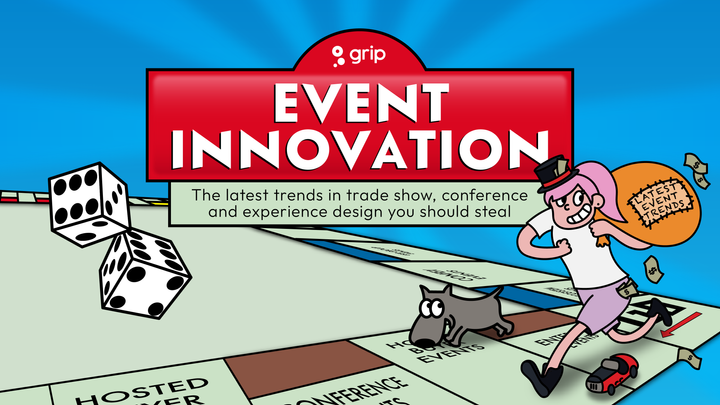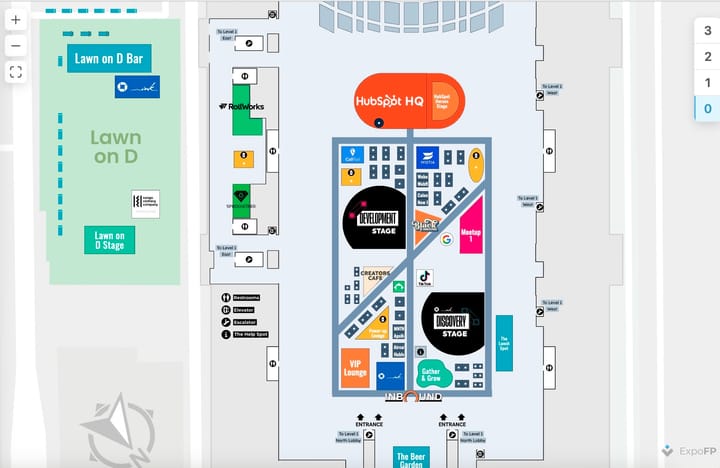Technologies That Transform Trade Show Industry
Headlines debating “Online vs. Offline Events” are a thing of the past. After the pandemic, it became clear that online events can…

Headlines debating “Online vs. Offline Events” are a thing of the past. After the pandemic, it became clear that online events can supplement offline, not replace them. But there is still some buzz on technologies — what is really beneficial for events and what is not necessary. Some of them, like AI, sparked debates about its utility, ethical implications and potential dangers.
However, certain technologies provide clearer evidence of their positive impact through post-event research, visitor feedback and analytics. These technologies have proven to enhance the customer experience and broaden networking opportunities. In this article, we will reveal the ones that proved to be effective.
Why Use Event Technologies?
Here are some key reasons to use different event management software for trade shows:
Efficient Planning and Organization allows organizers to create event timelines, manage tasks, track progress and allocate resources efficiently.
Registration and Attendee Management simplifies the registration process by offering online registration forms, automated confirmation emails and secure payment processing. It also enables organizers to track attendee information, generate badges and monitor attendance, facilitating smooth check-in processes and improving the overall attendee experience.
Exhibitor and Booth Management enables organizers to manage exhibitor registrations, assign booth spaces and track payments. It provides exhibitors with a platform to update their profiles, submit booth requirements and access event-related information.
Communication and Networking software allows organizers to send mass emails, event updates and reminders to attendees, exhibitors and sponsors. It facilitates networking by providing tools for attendee-to-attendee messaging, exhibitor-to-attendee communication and scheduling meetings or appointments.
With Real-Time Data and Analytics organizers can track attendee registrations, booth sales and other important metrics. This data helps identify trends, measure event success and make informed decisions for future trade shows.
On-Site Management and Check-In offers features like QR code scanning for fast check-ins, session tracking and live updates on event schedules. This ensures a seamless experience for attendees, exhibitors and staff, reducing wait times and enhancing overall satisfaction.
Integration and Automation software often integrates with other tools such as customer relationship management (CRM) systems, marketing automation platforms and accounting software. This allows organizers to automate repetitive tasks and ensure smooth data flow across various systems. Integration and automation save time, reduce manual errors and improve overall efficiency.
Types of Event Technologies
Now that you know how technology can help you, it is time to learn what these technologies are.
Event Apps
Event apps revolutionized the event sphere with event schedules, personalized agendas, session information and networking opportunities, enhancing overall event experience.
Examples: Whova, Eventify.
Virtual and Hybrid Event Platforms
With the rise of virtual and hybrid events, specialized platforms emerged to deliver immersive digital experiences, featuring live streaming, interactive sessions, virtual exhibitor booths and networking tools. It enables remote attendees to participate in events from anywhere in the world.
Examples: VFairs, Cvent, GRIP.
Live Polling and Q&A Tools
These technologies empower event organizers to engage attendees in real-time by enabling live polling and Q&A sessions. They facilitate audience participation, gather feedback and create interactive environments that encourage meaningful discussions and knowledge sharing.
Examples: DialogLoop, Slido, QuickTapSurvey.
Event Management Software
Event management software platforms have become essential tools for event planning, registration, attendee management, exhibitor coordination, communication, data analysis and overall event organization, offering a centralized solution for event professionals.
Examples: ExpoPlatfrom, Biizzaboo, GRIP.Accelevents
Floor Plans and Navigation Tools
Interactive floor plans make it easier to navigate the show. Event organizers have understood that large printed maps don’t help that much. That is when interactive floor plans became a game-changer. With GPS Positioning and Wayfinding, attendees can see their current location and make a route to a desired one.
Moreover, interactive floor plans can save time on exhibition management, help to make extra income with featured listings and automate the process of booth reservation.
Example: ExpoFP.
Augmented Reality (AR) and Virtual Reality (VR)
AR and VR technologies bring immersive experiences to events by overlaying virtual elements onto the real world or creating entirely virtual environments. They can be used for interactive demos, virtual tours, gamification and product showcases, enhancing attendee engagement, making learning fun and leaving a lasting impact.
Artificial Intelligence (AI)
AI technologies are utilized in event management for various purposes, including chatbots for attendee assistance, data analytics for personalized recommendations, facial recognition for seamless check-ins and sentiment analysis for real-time feedback monitoring. These enable event organizers to enhance event experiences and improve operational efficiency.
Examples: 42Chat, ChatGPT, DALL-E.
The rapid pace of technological innovation has brought about significant transformations in trade shows, redefining the way businesses connect, showcase their offerings and forge partnerships. By embracing and leveraging these technologies, trade show exhibitors and attendees can unlock new opportunities for growth, collaboration, and success.



